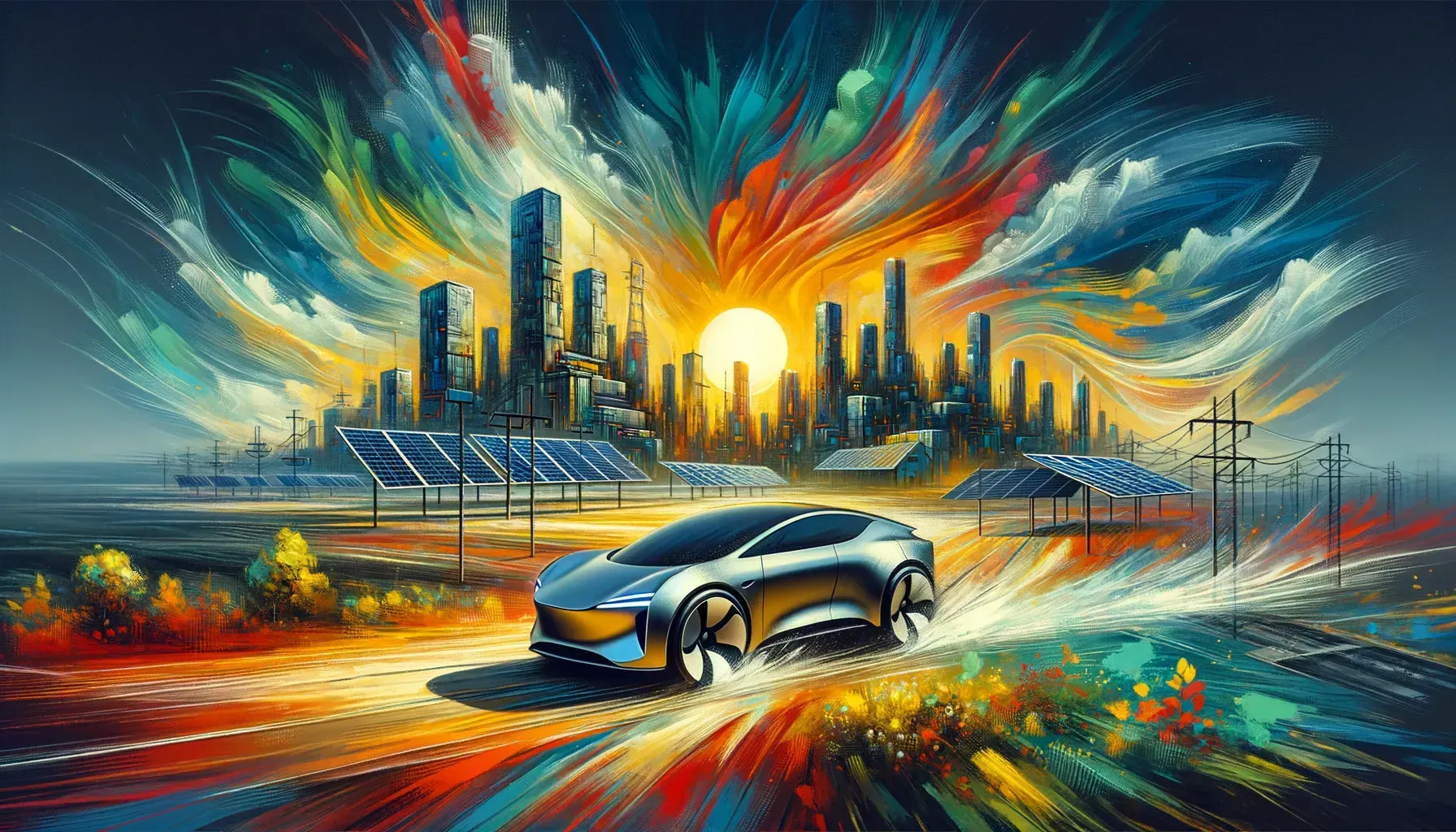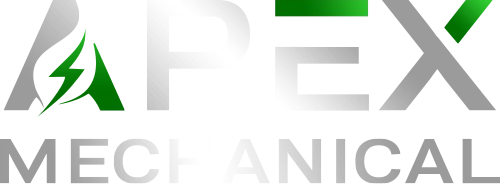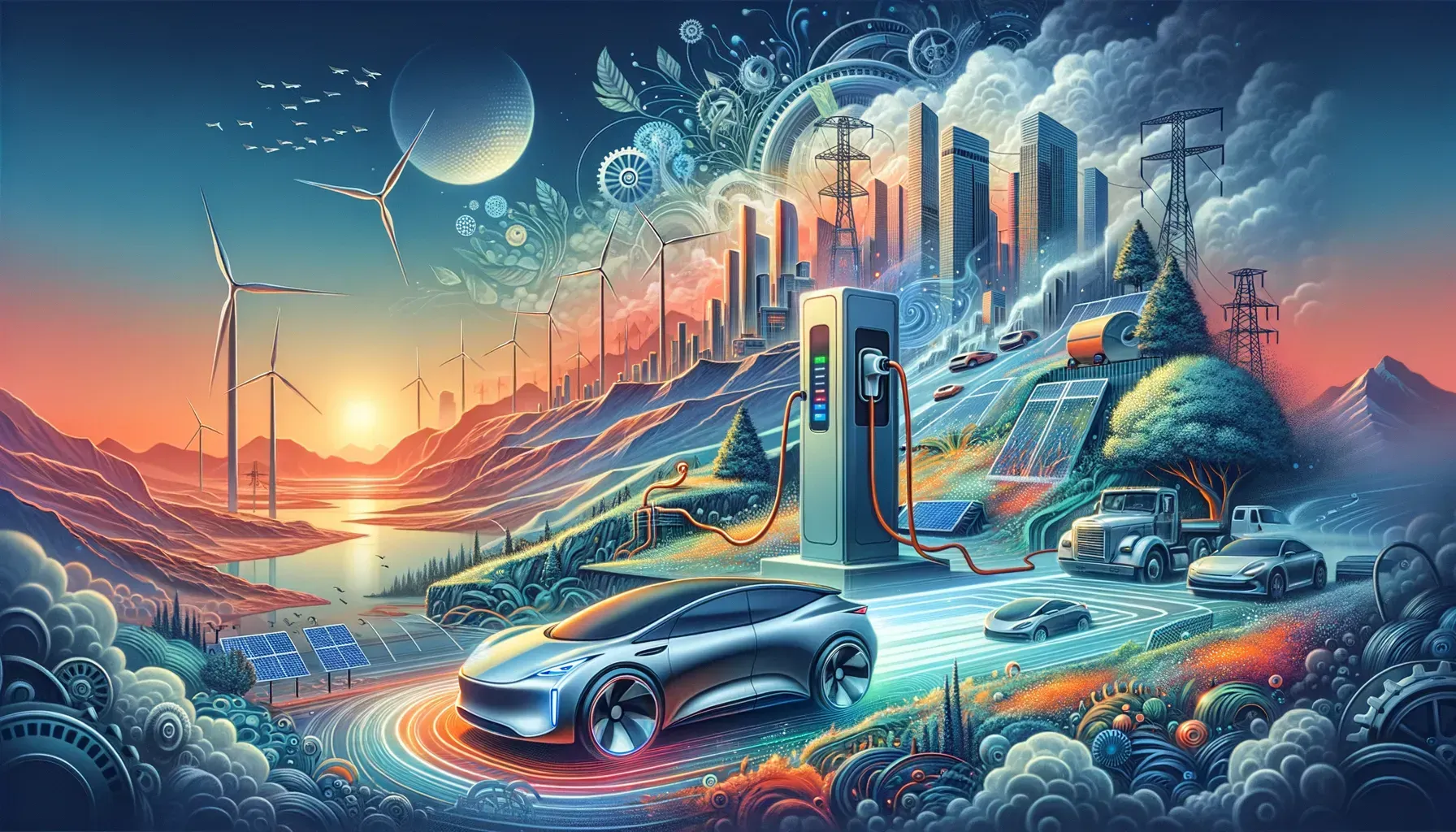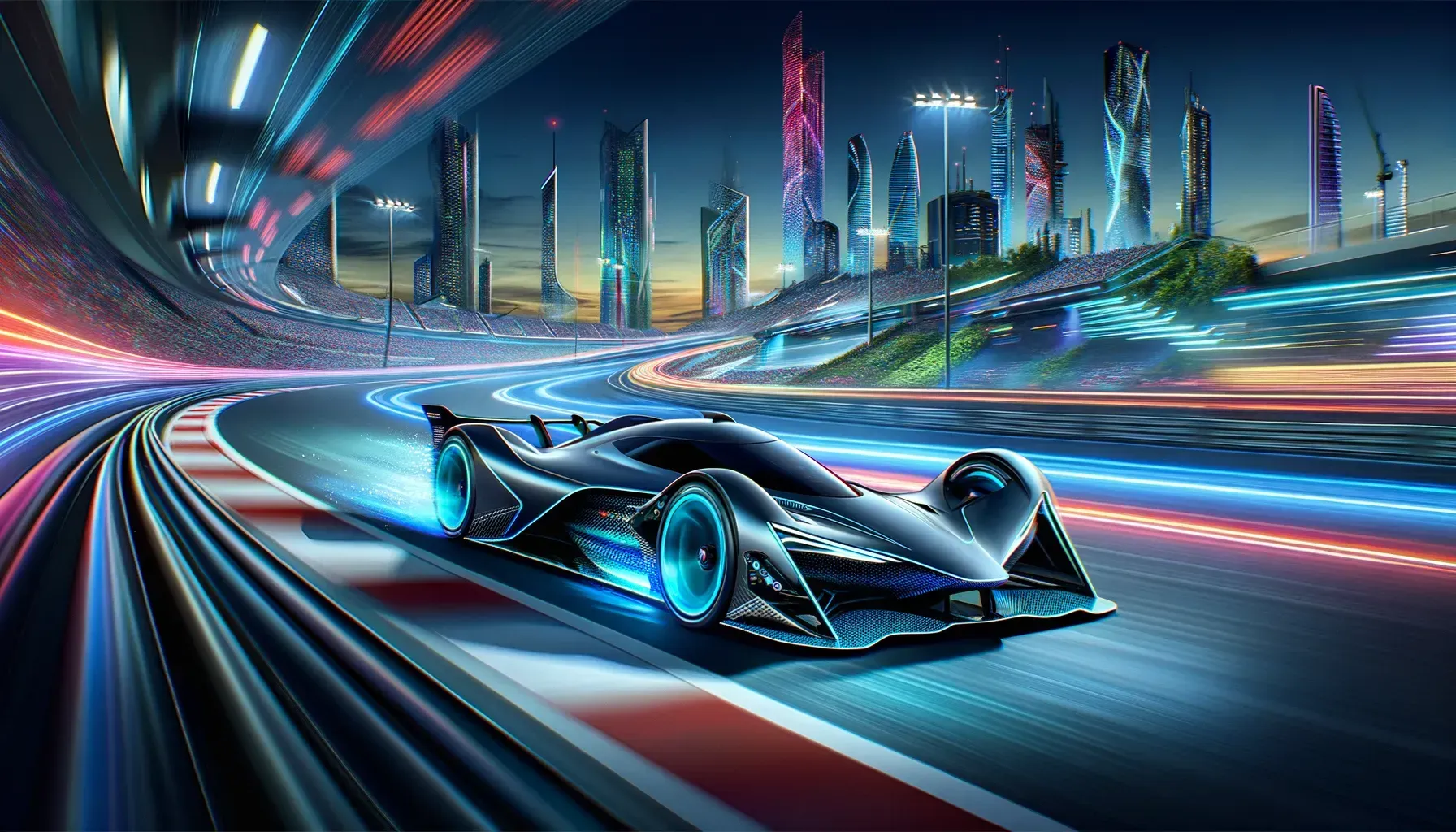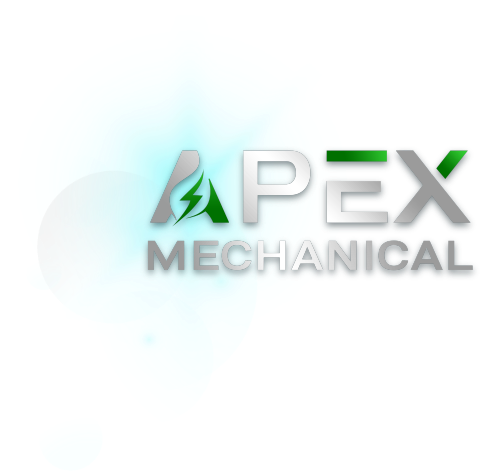The Future of Electric Vehicles: How Solid-State Batteries Will Revolutionize the Industry

In a world increasingly reliant on electric vehicles, the race for superior battery technology has never been more intense. Picture this: a vehicle that can take you over 600 miles on a single charge and recharge to 80 percent in under ten minutes—sounds like science fiction, right? Well, this futuristic scenario is very much becoming reality thanks to advancements in solid-state batteries. During the SNE Battery Day expo in South Korea, Samsung unveiled its groundbreaking technology, setting the stage for a transformation in how we think about electric vehicle efficiency and charging. This post delves into the implications of these developments for the EV landscape and what it means for drivers everywhere.
The Game-Changer: Solid-State Batteries Explained
Overview of Solid-State Battery Technology
Solid-state batteries (SSBs) are notable for their use of solid electrolytes instead of the traditional liquid electrolytes found in lithium-ion batteries. This fundamental shift enhances both safety and efficiency. But what does this mean for everyday users of electric vehicles (EVs)?
Essentially, SSBs reduce the risk of leaks and fires. This aspect alone makes them a game-changer. Moreover, they are expected to offer even higher energy densities. This means more power packed into a smaller space. Imagine being able to drive longer distances without having to stop frequently to charge your vehicle!
Comparison with Traditional Lithium-Ion Batteries
When comparing solid-state batteries with lithium-ion variants, the differences are very telling. Lithium-ion batteries have been the standard for many years. However, they also come with their own set of challenges:
- Charging times: Typically, charging a lithium-ion battery can take hours. Fast-charging stations help, but they often still require 30-40 minutes to reach 80%.
- Longevity issues: These batteries degrade over time, losing around 2-3% of their capacity yearly. In extreme conditions, this lifespan can be even shorter.
- Safety risks: Lithium-ion batteries can be prone to overheating and fires due to their liquid electrolyte.
On the other hand, solid-state batteries aim to address these issues head-on.
Advantages: Safety, Charging Time, and Longevity
The advantages of solid-state batteries are attracting widespread attention. Below are some noteworthy benefits:
- Safety : With solid electrolytes, concerns related to leaks and thermal runaway diminish significantly.
- Charging Time : They boast impressive charging capabilities, allowing for over 80% charge in just under 10 minutes, compared to the lengthy hours of conventional batteries.
- Longevity : Solid-state batteries are expected to last longer than their lithium-ion counterparts, addressing the common problem of battery degradation.
"Solid-state technology isn't just another evolution; it's a revolution in battery performance." - Expert Commentator
The Future of Solid-State Technology
As we look to the future, Samsung’s advancements in solid-state battery technology showcase a remarkable leap forward. During the recent SNE Battery Day expo in South Korea, the company introduced a new battery capable of exceeding a 600-mile range and achieving an 80% charge in less than 10 minutes.
Imagine how this could reshape the electric vehicle market! For many users, range anxiety—the fear of running out of charge—has been a significant deterrent to transitioning from traditional vehicles. Solid-state batteries may offer peace of mind.
Visual Representation of the Data
To better understand the capabilities of solid-state batteries, here's a simple chart:
| Feature | Specifications |
|---|---|
| Range | Exceeding 600 miles |
| Charging Time | Under 10 minutes |
As other companies like Toyota and Mercedes join the race to develop solid-state batteries, innovation will continue to accelerate. The realm of electric vehicles may soon enter a new era, offering not just safety and efficiency, but also affordability. The prospects seem endless.
Conclusion
The burgeoning field of solid-state battery technology shatters the conventional boundaries of battery performance. With enhanced safety, faster charging times, and improved longevity, they position themselves as essential components in the future of electric mobility. As developments continue to unfold, many are eager to see how this technology will transform everyday transportation.
The Competitive Landscape: Who's Leading and Why
The battery industry is evolving rapidly, with numerous players striving to capture market share. Key contenders in this space include Samsung , Toyota , Mercedes , CATL , and BYD . They are shaping the future of battery technology, especially concerning electric vehicles (EVs).
Market Share Dynamics
Understanding market dynamics is crucial. Currently, CATL dominates the lithium-ion market with a staggering over 33% share. Following closely is BYD , which holds about 15% of the market. This competition drives innovation and efficiency.
| Company | Market Share |
|---|---|
| CATL | Over 33% |
| BYD | Over 15% |
Key Players and Their Innovations
Samsung is making remarkable advancements in solid-state battery technology. This innovative battery can potentially reach a range exceeding 600 miles and charge to 80% in under 10 minutes. Traditional lithium-ion batteries take significantly longer to charge. Doesn’t that sound revolutionary? Yet, this is just the beginning of the competitive landscape.
Toyota and Mercedes are also investing heavily in these developments. Specifically, Mercedes has partnered with Factorial to significantly enhance battery range. This collaboration aims to increase the driving distance of electric cars by up to 80% compared to existing lithium-ion options.
Emerging Trends in Battery Technology
The future is promising. Numerous companies are delving into solid-state technology, realizing its potential. Solid-state batteries hold an advantage over traditional batteries due to higher energy density and lower degradation rates. For context, lithium-ion batteries typically lose about 2 to 3% of their capacity annually in warmer climates. On the contrary, solid-state solutions can not only extend lifespans but also charge significantly faster.
“In the crowded battery space, innovation is not optional; it's essential for survival.” - Industry Analyst
This quote encapsulates the urgency in the race for battery supremacy. In a world increasingly leaning towards sustainability, businesses must adapt quickly to the changing landscape.
Emerging trends indicate that key players are aggressively investing in solid-state technology to gain a competitive edge. Companies such as CATL and BYD are not merely resting on their laurels; they are innovating rapidly to improve performance and efficiency. With EZV demand projected to grow significantly, battery producers need to innovate to meet expectations.
The Road Ahead
As more players enter the market, competition will intensify. Innovations like those seen at the recent SNE Battery Day expo highlight just how pivotal this technology is. The advancements signal a potential shift in how we view electric vehicles. Improvement costs may remain high in the near term but the benefits are undeniable, and companies that innovate effectively will thrive.
To summarize, understanding the competitive landscape is critical for stakeholders and investors alike. The battle for market share continues to heat up. Companies like Samsung , Toyota , Mercedes , CATL , and BYD are setting the stage for transformative changes in battery technology, ensuring they not only meet market demand but also push the boundaries of what is possible in the realm of electric vehicles.
The Affordability Challenge: Bridging the Price Gap
The rise of electric vehicles (EVs) is exciting. However, the affordability of advanced battery technologies presents a major hurdle. The increasing demand for innovative batteries, especially solid-state types, is evident. Yet, it is essential to address the monetary aspects that come into play. Why? Because without affordability, widespread adoption remains a distant dream.
Expensive Production Costs of Solid-State Batteries
Solid-state batteries boast impressive advantages over traditional lithium-ion batteries. They promise longer ranges and faster charging times. However, one significant drawback remains: high production costs. Current estimates suggest that these expenses may limit the initial use of solid-state batteries to premium vehicle segments. It's a tough reality.
To illustrate, consider this: while a solid-state battery may have the capabilities to improve performance dramatically, its cost-effectiveness remains questionable. Many manufacturers, including Samsung, find themselves facing these challenges head-on.
- High production costs limit market access.
- Premium vehicles can absorb initial costs better.
- Many consumers may not afford top-tier models.
Samsung's Strategy for Affordable Lithium Batteries
In response to the challenges of solid-state batteries, Samsung is pursuing a cost-effective strategy for lithium batteries. They are not only focusing on high-end markets. Instead, Samsung aims to deliver affordable lithium options for entry-level vehicle segments. The goal is to make electric vehicles accessible to a broader audience.
This is critical because as Samsung moves forward, they are positioning themselves to compete on price. They recognize that the key to EV adoption lies in making vehicles affordable for everyone. The company plans to introduce rapidly rechargeable options projected by 2026.
"Affordability will be the key to mass adoption of advanced battery technologies." - Market Strategist
Projected Market Impact by 2026
What does the future hold for battery technologies? Projections for the coming years indicate that the market will undergo significant changes. Experts predict a substantial decrease in lithium battery prices by 2026. This reduction could open the door for many consumers who are currently priced out of the market.
Moreover, as mass production of solid-state batteries is set to begin by 2027, the landscape may shift dramatically. Here are some key points to consider:
- Projected price reduction of lithium batteries by 2026
- Potential increase in EV adoption due to affordability
- Mass production efforts may lead to lower costs over time
Key Considerations
Despite the excitement surrounding advanced battery technology, hurdles remain. The balancing act of innovation and affordability determines whether these technologies will see widespread adoption. There are several challenges that need to be addressed:
- Production costs must decrease to reach broader markets.
- Consumers need viable, affordable options for electric vehicles.
- Competitive strategies from companies like Samsung will shape the industry.
The EV market is at a crossroads. Samsung's strategy could lead to a more accessible future for electric vehicles, impacting not just the premium segments but entry-level models, too. This transition could redefine how consumers view electric vehicles, turning them into a real choice for the average consumer.
In conclusion, understanding the affordability challenge is crucial. As the industry evolves, the focus on innovative solutions will remain—both in technology and in pricing strategies. The next few years could determine the trajectory of the electric vehicle market, with Samsung and other companies leading the charge.
Real-World Applications: Success Stories and Innovations
Nio Automotive has emerged at the forefront of exploring advanced battery technologies, particularly through its innovative use of solid-state batteries. Their recent experiments with these batteries in the ET7 sedan have led to impressive outcomes, capturing attention in the automotive world.
1. Case Study: Nio Automotive's Solid-State Battery Tests
In January 2021, Nio began testing semi-solid-state batteries. The results have been nothing short of remarkable. Their ET7 sedan achieved a distance of 650 miles on a single charge . This kind of performance is revolutionary compared to traditional lithium-ion batteries, which often struggle with range issues.
Such achievements raise important questions. How will this technology reshape the future of electric vehicles? Could we soon see a time when range anxiety is a thing of the past?
Each successful test drives the industry closer to mainstream adoption of solid-state batteries. As an Automotive Engineer noted:
"Every successful test brings us one step closer to mainstream adoption of solid-state batteries."
2. Insights from Earlier Adopters of Battery Technologies
Many companies have dabbled with various battery technologies before finding success. Nio's progress comes in a competitive landscape filled with innovators, such as Samsung, Toyota, and BYD. For example, Samsung recently showcased its advancements in solid-state batteries during the SNE Battery Day expo in South Korea. They revealed a new battery that can exceed a 600-mile range and achieve an 80 percent charge in under 10 minutes .
What does this mean for the industry? Nio's achievements provide valuable insights for other manufacturers. The key takeaway is clear: adopting new battery technologies isn't just a trend; it is becoming a necessity to remain competitive.
3. Potential for Broader Industry Impact
The broadened application of solid-state batteries could significantly affect the electric vehicle market. Traditional lithium-ion batteries, while widely used, face challenges like longer charging times and decreased lifespan over time. For many vehicle users, these issues represent critical pain points.
Solid-state batteries promise to provide a higher energy density , which enhances the driving range and reduces weight. How could this shift impact consumer choices? Imagine an electric vehicle that not only supports longer journeys but also charges at lightning speed. This is not just a possibility; it's becoming a reality.
Nio's successful demonstration of a solid-state battery evokes enthusiasm among consumers already frustrated by the limitations of existing technologies. As more companies invest in research and development, the prospect of advanced batteries could propel the electric vehicle industry forward.
Technological Achievements at a Glance
| Model | Battery Type | Range (miles) |
|---|---|---|
| Nio ET7 | Semi-Solid-State | 650 |
Consumers have started to take notice, especially when technology is unveiled during live events. These demonstrations enhance consumer confidence, showcasing that the industry is on the brink of transformative changes. Nio's undefeated commitment to innovation is a beacon for other manufacturers.
The potential for collaboration and shared insights within the industry may lead to faster advancements. With Nio and others setting the pace, it's likely that electric vehicles' future will be marked by *safer*, *more efficient*, and *user-friendly* solutions.
As we look forward, Nio Automotive represents a pivotal case study. The company's journey with solid-state technology highlights not just its potential but the broader implications for the automotive industry and clean energy solutions. Innovations like these fuel speculation about what the future holds for electric vehicles.
In summary, Nio Automotive stands as a strong example of how solid-state battery technology can push the industry forward. The ET7's ability to achieve 650 miles on a single charge is a baseline for future possibilities. As we observe the ongoing developments in this sector, the question remains: how quickly will the industry adapt to embrace these innovations?
Looking Ahead: The Future of Electric Vehicles
The future of electric vehicles (EVs) is brighter than ever. With groundbreaking advancements in battery technology and shifting consumer attitudes, we can expect a revolution in the automotive industry. But what does this future hold?
Long-term Expectations for Battery Technology and Car Range
Battery technology is set to change significantly in the coming years. Innovations in solid-state batteries could dramatically enhance both energy retention and charging capabilities. For instance, Samsung recently announced a new battery that can exceed a 600-mile range and achieve an 80 percent charge in under 10 minutes . This is revolutionary compared to traditional lithium-ion batteries, which can take several hours to recharge.
- Projected lifespan of batteries: EV batteries are expected to last between 12 to 15 years in moderate climates.
- Lithium demand: It’s projected to rise by 900% by 2040 .
Imagine driving your electric car for longer distances without the worry of running out of power. This is not just a dream—it’s becoming a reality. Innovations will lead to fast-charging stations becoming more widespread, making it convenient for users.
Anticipated Consumer Shifts Towards EVs
Consumer interest in electric vehicles is on the rise. People are becoming more environmentally conscious and are looking for sustainable options. It's no longer just about gas versus electric; it's about embracing a new way of life.
Many consumers are now considering switching to electric cars, especially with the anticipated improvements in battery life and range. As the quote from a future trends expert suggests,
"The next decade will define electric vehicles as we know them today."Individuals are eager for better options that meet their needs.
With companies racing to develop innovative products, such as solid-state batteries, we may witness *radical changes* in consumer preferences. A growing number of companies, including Toyota and CATL, are pushing for faster, more efficient battery technologies, highlighting the urgency and competition in the market.
Predicted Challenges and Solutions
Despite the positivity surrounding electric vehicles, some challenges remain. Manufacturers must navigate potential supply chain hurdles as the demand for lithium and other materials skyrockets. However, there are solutions. Companies can focus on cost-effective production methods to make EVs affordable for a broader consumer base.
High production costs for solid-state batteries present another challenge. While these batteries can vastly improve driving range and charge times, they might initially cater to premium vehicle segments. Nonetheless, experts believe that as technology evolves, prices will decrease.
Moreover, EV manufacturers need to work on extending the warranty periods for batteries. Currently, many offer warranties of at least eight years or 100,000 miles. This helps build trust with consumers who remain worried about battery durability.
In Conclusion
Exciting developments are taking place in the world of electric vehicles. With advances in battery technology, especially solid-state batteries, consumers are likely to see remarkable improvements in car range and charging speed. The surge in electric vehicle adoption is evident, coupled with the necessity for automotive manufacturers to address supply chain issues and affordability.
As we look forward to the next decade, the landscape of electric vehicles could transform dramatically, and it's clear that innovation will play a crucial role in this shift.
TL;DR: The future of electric vehicles looks promising with significant advancements in battery technology and increasing consumer interest. Challenges like high production costs and supply chain hurdles remain, but innovative solutions are on the horizon.
